Sometimes, the loudest guy in the room doesn’t get all the attention.
Nor should he.
Lincoln is quietly establishing itself as America’s premier luxury car brand – at the expense of Cadillac, which is in real danger of losing that title (sales have been wilting for the past three years).
But how?
By emphasizing luxury – an attribute that’s been sharing equal billing with sportiness in almost ever “luxury” brand car.
Not that there’s anything wrong with being sporty. The problem – for Cadillac – is that everyone is already trying to be that.
Lincoln’s idea is to offer a counterpoint – to all of them.
It began with the introduction of the new Continental – Lincoln’s flagship sedan. Which makes no effort to be BMW’s (or Benz’s) flagship sedan but rather something those sedans are not.
Which it is.
The new Nautilus carries the same flag.
The Nautilus is Lincoln’s mid-sized /five-passenger crossover SUV.
It replaces the MKX, which has been retired.
Though it’s similar in size and general layout to mid-sized, luxury-brand crossover like the Lexus RX350 and Cadillac XT5, it differs from them in several objective – and subjective – ways.
Objectively, it’s one of the few luxury crossover SUVs in its class that offers more than one engine – and having more choices is arguably one of the definitions of luxury.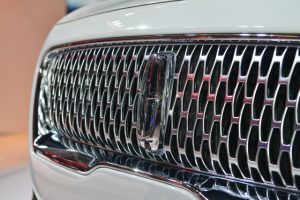
Lincoln offers buyers the choice of turbocharged four or twin-turbocharged V6. Rivals like the XT5, RX350 and Audi Q5 come with just one engine, no choices – regardless of trim.
The Nautilus also has substantially more cargo capacity than several of its rivals – and a roomier back seat than most.
It also offers 22-way heated and massaging seats – one of several luxury features not offered in the luxury-sport competition.
And how about free annual detailing? Unlimited car washes? Pick up and delivery service when the vehicle needs service?
Nautilus offers those things, too. The others don’t.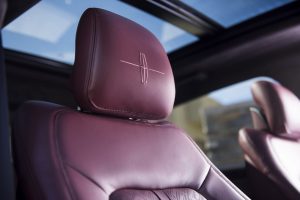
Prices start at $41,335 for the base trim with front-wheel-drive and the standard 2.0 liter turbocharged four cylinder engine, paired with an eight-speed automatic transmission.
A top-of-the-line Black Label edition stickers for $57,890.
That one comes standard with the twin-turbo V6 and AWD, a spectacular 19-speaker Revel Ultra premium audio system and an indulgent array of concierge services, including those free cars washes whenever you need one, the pick up and delivery service whenever the vehicle needs to be serviced, the free annual detailing and membership in a members-only restaurant club.
All trims come standard with some unique luxury amenities, too – including Lincoln’s very thoughtful exterior keypad entry system.
What’s New
The Nautilus shares some of its chassis underpinnings with the previous MKX but is otherwise an all-new model, including its standard and optional drivetrains.
What’s Good
Subtle, quiet – classy.
Also roomy.
AWD available with either engine; almost 8 inches of ground clearance either way.
Luxury (and tech) features you won’t find in the competition.
What’s Not So Good
The wireless cell phone charger is optional.
ASS is standard.
Under The Hood
It’s interesting that many of the luxury-sport offerings in this class only offer one engine.
Choice being an element of luxury.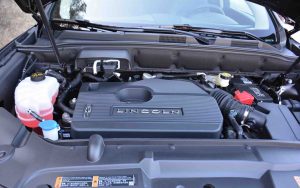
Lincoln offers two engine options.
The standard Nautilus engine is a 2.0 liter turbocharged (and direct-injected) four cylinder engine that makes 250 horsepower and a stout 280 ft.-lbs. of torque at 3,000 RPM.
It comes paired with an eight-speed automatic transmission.
Front-wheel-drive is standard, but you can select an optional all-wheel-drive system – one that’s also different from the run-of-the-mill because it can automatically disengage when it’s not needed for traction. This decreases rolling resistance and improves gas mileage – while also reducing wear and tear on AWD system components.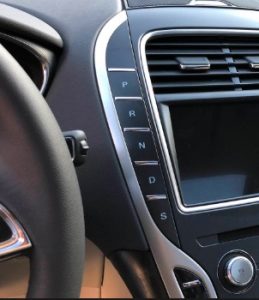
Most AWD systems are full time, meaning they are always engaged – even when AWD isn’t needed.
A 2.7 liter, 335 horsepower twin-turbo V6 – which also makes 380 ft.-lbs. of torque – is available optionally – and with or without the AWD system.
Equipped with this engine, the Nautilus can get to 60 in 5.8 seconds – making it one of the quickest vehicles in its class.
If you’re in a hurry.
Surprisingly, the V6 is slightly more fuel-efficient than the base 2.0 liter engine – at least, on the highway. Where it averages 27 MPG vs. just 25 for the turbo four. The smaller engine splits the difference on the other end of the spectrum – city mileage – where it rates 21 to the V6’s 18 MPG.
Max tow capacity with the V6 is 3,500 lbs. – in line with the max tow ratings of rivals like the RX350, XT5 and Audi Q5.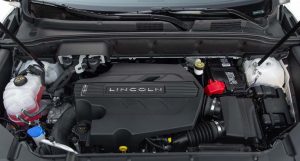
Unfortunately, automatic stop/start (ASS) is standard, no matter which engine you pick.
This system – like electric cars – is practically being shoved down our throats via government regulatory pressure, in both cases to help the car companies comply with federal fuel economy fatwas.
EVs – and ASS – improve a car company’s overall “fleet average” fuel economy, which helps them avoid “gas guzzler” fines.
Battery life is apt to be less, due to the strain on it of having to restart the engine a dozen times each day instead of just a couple of times. Whatever you “saved” on gas – maybe 1 MPG overall – will be countermanded by having to spend $100 on a new battery every two or three years rather than once every four or five.
ASS is also not luxurious.
Though the Lincoln’s stop/start is not jarring, it’s noticeable. You can still feel the engine cycling off an on.
And in a luxury car, the point is to feel – and hear – as little as possible.
The good news is you can turn ASS off. There is a button you can push to defeat the system – and let the engine run until you turn it off.
The bad news is that – as in every car that has ASS – you have to remember to turn the ASS off, otherwise it will automatically turn itself on – and the engine off.
Having to remember to do this is also less than luxurious.
One’s vehicle ought not to pre-empt – or pester you.
The Nautilus is such a pleasant place to spend time in that you may find yourself looking forward to your commute.
And taking the long way home.
Exterior perimeter lights illuminate automatically as you approach; then the cabin lights gently beckon. Close the door, the outside world is silenced by acoustic laminated glass.
Now turn the 22-way massaging seats on; select your favorite playlist and let the Revel audio system transport you.
Or, leave that up to the engines . . . either of them.
Normally, the base engine is lacking in the gumption department – for the sake of being easier on gas.
Here, the chief downside of the four vs. the six is that there’s no mileage benefit to be had.
It’s usually the case in these Latter Days that when two engines are offered, one smaller, the other larger – the hope (on the part of the car company, for the sake of federal fatwa compliance) is that most people will buy the smaller – and more fuel-efficient – four, which helps the car company meet the MPG mandatory minimums decreed by the fatwa.
The larger/stronger engine can be advertised as available.
You just have to pay extra for the additional gumption.
Here you can pay extra – but it isn’t necessary. To get the gumption.
The turbo 2.0 four, like many of its kind, makes the torque of a 3.5 liter V6 (without the turbo) and has it sooner. The optional V6 – with that pair of turbos – has even more torque.
Both whisk the Nautilus forward like an incoming tide, easily and naturally.
Shifts – all eight of them – are noticeable only if you keep track of them on the instrument cluster’s display. There are paddle shifters for manual control over those shifts, but why would you?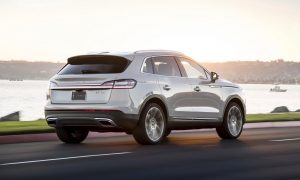
They are likely to gather much dust.
The top two gears are deep overdrives – .75 for seventh and .62 for eighth – that final OD being so deep that you can achieve 75-80 with only about 2,000 RPM showing on the tach.
At 70, it’s around 1,800.
Only an electric car is quieter. And no EV can travel almost 500 miles on the highway without a pit stop. The Nautilus can. And it doesn’t take 30-45 minutes, minimum, at a “fast” charger to resuscitate, either.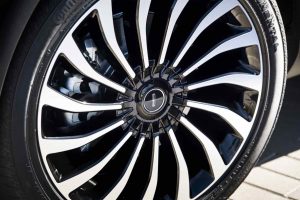
But the Lincoln’s supreme advantage over the hounds chasing the luxury-sport rabbit is that it is indifferent to the rabbit – and the hounds.
The others may be able to generate better skid pad numbers – and quicker lap times.
But who drives crossover SUVs that way, except in commercials? What buyer in search of luxury cares about such things?
On the other hand, everyone has to drive over potholes. The difference is you’ll rarely notice them from within the Nautilus.
Luxury car designers once knew the importance of this. Lincoln hasn’t forgotten it.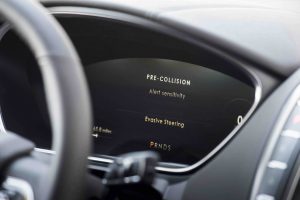
You can order the Nautilus with a bundle of driver-assist system and Lincoln is touting them proudly. These include not just the usual automated braking assist but also a lane keep assist system that actually does keep the Nautilus in its lane, not just blink and beep at you if it senses you’ve “departed” from your lane.
Within limits, it can steer the Nautilus for you – the idea being to reduce the number of small steering inputs one must normally make to keep a vehicle centered in its lane – and to reduce the amount of effort the driver has to put into steering. In addition to keeping you straight and true, the system also automatically decreases the amount of steering input (as well as effort) necessary to make corrections at low speeds, as while trying to slide into a curbside parking spot.
Just don’t get too comfortable.
The idea is to relax – not fall asleep!
Part of being sporty is looking angry – or at least, intimidating. Look around at all the angry-faced cars, including luxury cars.
And crossovers.
But it’s hard to relax when you’re angry – or trying to be intimidating.
The Nautilus wants you to relax.
Everything about it is calming, not just the 22-way massaging seats. Blue rather than red backlighting. Soft tones – and touches, including the pushbutton gear selector, mounted in a vertical stack to the right of the main gauge cluster. It is much more . . . relaxing to use than a feel-less toggle that makes you double-check to be sure you’re actually in Drive rather than Reverse.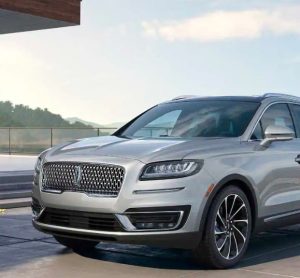
No mistaking the individual PRNDS buttons – and that is very relaxing.
Everything you touch has give. There’s no hardness here. Nor coldness. The cabin of the Nautilus is warm and welcoming.
Also, roomy.
More so than the rest.
Especially in the second row and behind the second row.
Also with the second row stowed.
It has 39.6 inches of backseat legroom – more than the Lexus RX350 (38 inches) and Audi Q5 (37.8 inches) and vastly more cargo room than either, regardless of the position of the second row.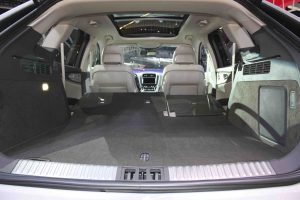
Behind them, there’s 37.2 inches. Folded flat, cargo capacity opens up to 68.8 cubic feet – which is copiously more room for your stuff than in the RX (18.4 behind the second row; 56.3 total) as well as in the Q5 (25.1 cubic feet behind the second row; 53.1 total).
The only one that comes close is the Cadillac XT5, which has 39.5 inches of second row legroom, 30 cubic feet of cargo space behind its second row and 63 cubic feet with the second row folded.
But the Cadillac is angular, angry and very sporty.
It’s not a matter of better or worse.
It’s a question of differences.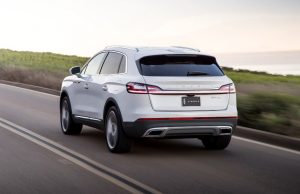
The Rest
Every new car, just about, has keyless entry – but what if you’ve lost your keys? No problem. You can gain entry to the Nautilus via the exterior keypad, a feature only offered by Lincoln.
Another unusual feature is the factory-installed WAZE app – which can alert you to radar traps along your route as well as as accidents and road work. This app has been around for a couple of years, but the Nautilus is the first to offer it integrated with the vehicle’s factory infotainment system – as opposed to a smartphone app.
The Bottom Line
Americans used to enjoy driving, just for the sake of it. The Nautilus can help them remember why.
. . .
Got a question about cars – or anything else? Click on the “ask Eric” link and send ’em in!
If you like what you’ve found here please consider supporting EPautos.
We depend on you to keep the wheels turning!
Our donate button is here.
If you prefer not to use PayPal, our mailing address is:
EPautos
721 Hummingbird Lane SE
Copper Hill, VA 24079
PS: Get an EPautos magnet (pictured below) in return for a $20 or more one-time donation or a $5 or more monthly recurring donation. (Please be sure to tell us you want a sticker – and also, provide an address, so we know where to mail the thing!)
My latest eBook is also available for your favorite price – free! Click here. 


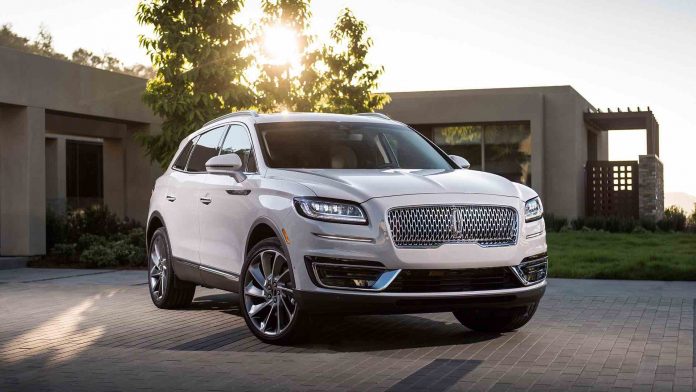


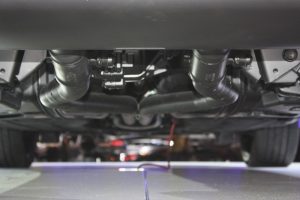

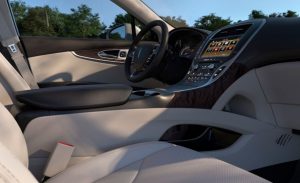







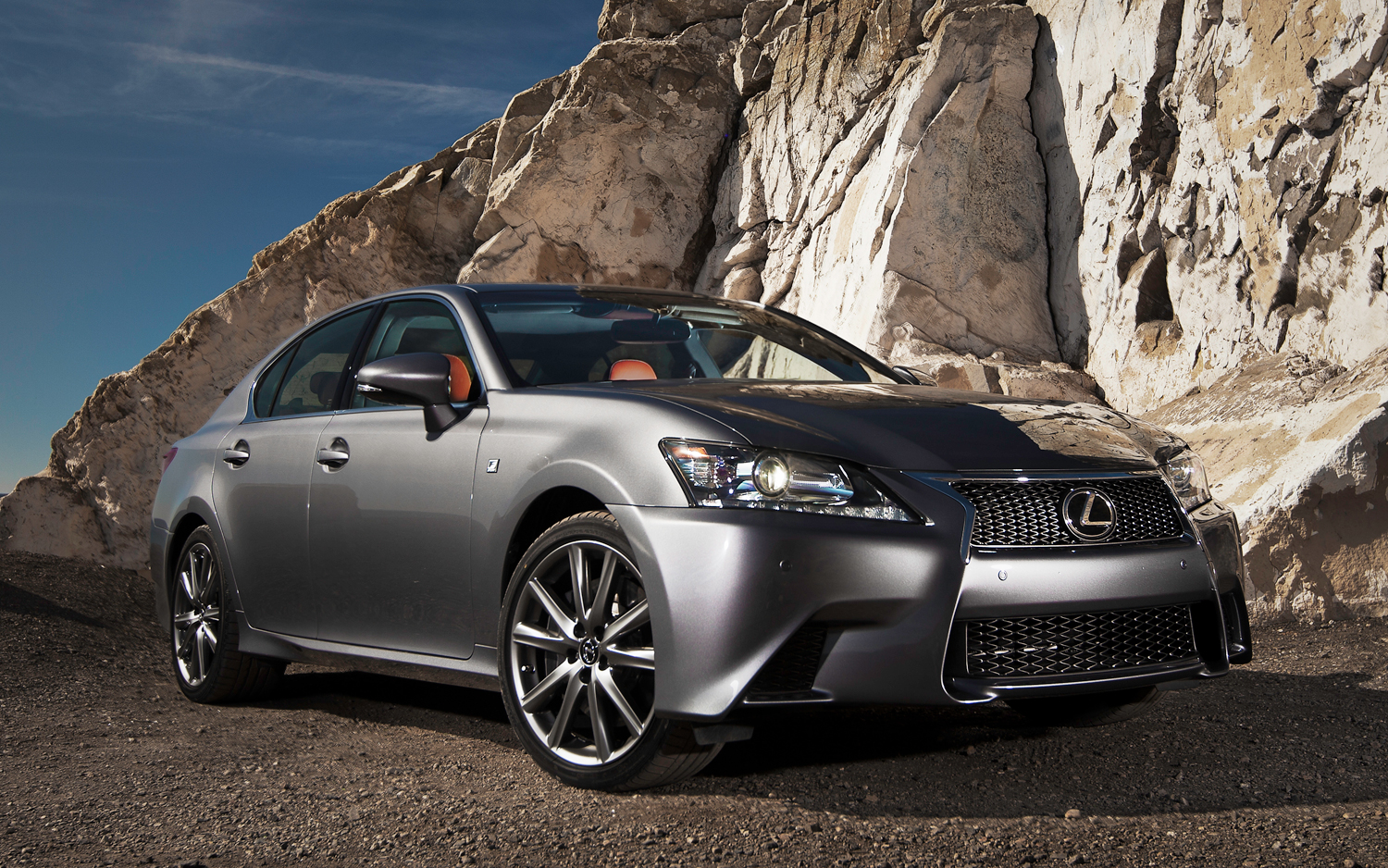
Yet another vehicle that should have the option for a V8.
Getting a V6 normally comes with all the tarted up options from the dealer driving it out of range for many people.
Ah well, better times.
Hey Eric, Check this out – https://youtu.be/EzbhC1yc0wk
this guy is like saying a lot of what you said in your Cadillac article some days ago…. think you have a secret fan ?
THAT is a nice car! That’s what Caddy needs to build again.
Under the skin, this is basically a heavily updated MKX, emphasis on the heavily. The powertrains are new/updated and the interior and exterior are both new. This isn’t an all new model, but it’s also much more than a mid-cycle refresh. The idea seems to be to make the existing platform last a few more years while Lincoln totally retools their lineup. You can see this most easily by the simple fact that they are moving away from alphanumeric model discriptors (MKX, MKZ, etc.) and back to real names (Continental, Nautilus, Navigator, Aviator). They are returning to their roots.
It started with the new (now several years old) Continental, which has gotten fairly good reviews overall but unfortunately is front wheel drive and a sedan, neither of which the market is interested in these days. As such, it hasn’t been a big seller for them. The real breakthrough for them has been the new Navigator, which was already the only model keeping Lincoln afloat. The Nautilus hasn’t made as big a splash, partly because it’s not all new, but mostly because it has been overshadowed by the 3-row Aviator, based on the all new Ford Explorer that is coming out soon.
This transition has been in the works for several years and was a direct response to the death of Mercury and the fact that many were expecting Ford to kill off Lincoln, too. Lincoln had been wallowing in extremely poor attempts at platform engineering for decades. Their best seller, the Navigator, was a perennial also-ran to the Cadillac Escalade, and none of their cars or SUVs were competitive in the least. About 5-6 years ago, Ford cleared out the old staff and started mostly with a clean-sheet reboot of Lincoln. They kept existing models with little to no updates (adding the 3.5L twin-turbo V6 from the F-150 into the Navigator and changing the grill, for example) to already long-outdated models. In the meantime, Cadillac has lost all its early momentum. The Escalade, though still a good seller for them, isn’t much different from a well appointed, but much cheaper, Tahoe or Yukon, and all of them have been hurt by severely low reliability ratings. Cadillac has depended too heavily on sedans which, while well reviewed, are losing market share, and somewhat anonymous and uninteresting SUVs which do not differentiate themselves from competitors from Germany or Japan in any meaningful way. Lincoln, on the other hand, took time to consider the market and recognized that nobody does American luxury any longer, with the possible exception of the Chrysler 300, which is based on a platform that was old when it first debuted. They have gone back to their roots and are in the midst of a series of releases that promises to breath new life into both Lincoln and Ford.
GM, judging from the lackluster new Silverado and Sierra pickups, the killing off of most Chevy cars, the underwhelming performance of Buick as a whole, and the slow decline of Cadillac (again), seems to be in eclipse. The bail-out obviously hasn’t helped them in the long run, which is what every Austrian economist predicted. Ford, which also took a bail-out, didn’t get as ravaged by the recession and didn’t have to remove its leadership by government mandate. Instead, they changed leadership based mostly on market failures and successes, as an entrepreneurial enterprise should, and it seems to be paying dividends in many areas. They are still fraught with cronyism, union burdens, and a lot of other demerits, but of the big three, they seem least encumbered right now. Across town, Chrysler is in even worse shape. bought by Fiat with US taxpayer money, they have only two bright spots in their lineup, the new Ram pickup truck lineup and the Jeep division. Again, they don’t seem to have fared well through the bail-out, also as predicted. The only thing in their future I’m currently aware of that may be of interest is the new Jeep Gladiator (Wrangler pickup) and the mysterious Jeep Grand Wagoneer, which has been pushed back so many times that one wonders if it will ever materialize to compete with the Navigator and Escalade.
Hi SJ,
Well-said!
My opinion in re GM: The appointment of Mary Barra was catastrophic and possibly fatal. It’s not that she’s female; it’s that she is the embodiment of the type of woman who has no business running a car company.
maybe if they paid CAFE fines, like FCA, and fought Uncle instead of getting in bed with them, they would be in a different place?
Hi Chris,
I wish they would! And – to some degree – they are. Ford, I mean… I have a story on deck about the new 7.3 liter V8 that’s coming…. cast iron. Pushrods. Hot zig!
I think big gas engines are going to make a comeback in medium duty trucks, as the diesel regulations have made the diesels unaffordable to run.
had many GM 8.1’s. I think FCA has a decent newer 6.4, Ford’s is currently a 6.2?, and GM’s 6.0 is almost 20 years old, a 6.0 great engine. Still have one in a 2001 2500, and it still runs great at 175K miles. I heard GM is coming out with a replacement soon if they haven’t already.
Looking forward to the ford 7.3 review.
With the extra cost of diesel fuel, the cost of DEF, the higher repair/maintenance costs, and the fact that you really don’t even want to start a diesel unless you’re going to drive a significant number of miles, gas engines just make more sense.
Lots of used Duramax and others for sale around here, but I won’t touch one because a “minor” repair can cost thousand$.
I really like what Lincoln is doing. I agree with your premise Eric vs the others.
I personally won’t buy a FWD based vehicle, but they should do really well with the majority of buyers.
Do you think this vehicle will move to the new RWD based Explorer platform?
side note: My family was once all GM for almost 30 years. We are now completely divested of their horrendous mpg-first-based-tuning, with two F150 5.0’s (because of your recent review!) a Charger V6, 300 V8, and Grand Cherokee V8. We are all very happy now, except my daughter who wants the V8, but she can’t cause she has to have the AWD-V6-only living in RI (not the most experienced driver, yet).
Thanks Eric
I must say the new Lincolns are a sight for sore eyes in a sea of ugly, overwrought car designs. I saw a new Continental the other day, and it was quite pleasing to look at.
I am confused, not about this vehicle , but about disengaging AWD for better gas mileage.
How does that really work? All the components (half shafts, differential, driveline, etc) are still turning and being ground driven, thus creating drag. So what difference does it really make that they are not directly connected to the engine? It seems like it might even be a greater penalty that the power is going to the ground and then back up into the “coasting” components than if the engine was directly turning all four wheels all the time.
Unless they somehow have remotely controlled “lock-out” hubs that actually disconnect the wheels from the driveline components ?????
There are owners of Honda Pilots & Ridgelines that will remove the propshaft connecting the front transmission to the rear differential with the intent of saving fuel. Frankly, I don’t understand their thinking – they buy a vehicle designed to be able to travel off-road and in adverse travel conditions, and then they neuter it.
My question would be, is it possible to remove the front drive hardware, keep the rear, and still have a functional vehicle?
I’m not familiar with every single design, but I think that they are all similar.
You would have to remove the front axles, and that usually leaves a big hole in each side of the front differential / transaxle.
It’s sort of like launching an ICBM horizontally from a sub: you could but why would you?
Because RWD is the True Path of Driving Righteousness, that’s why.
Except that an altered AWD is just half of an AWD, not really a RWD.
A real RWD has a substantial fore’n aft engine, and a solid rear axle made of iron and steel and leaf spring suspension (or coils and trailing arms).
Have you even seen underneath these IRS AWDs ??? Ball joints and fake tie rods anchored to the “frame” ?
chiph, in that case the rear axles and differential would still be turning (ground driven).
Only in the old solid axle 4x4s with lock-out hubs could you actually isolate (and therefore stop) driveline components.
Very nice looking vehicle. I like the avoidance of the garishly ugly grills which seem to be so prevalent among luxury brands, especially Lexus. Also like Lincoln’s “lead with luxury” philosophy.
My only concern would be quality control. A cousin of mine bought a new 2016 MKX, and that thing has numerous problems, like windshields that crack for no apparent reason, and slow or non-existent responses to phone and sound system voice commands. This Nautilus of course, is a whole new model, and those build quality problems may have been eliminated. But I’m not sure that’s the way to bet…….
Cool to see Lincoln trying to be an “American” luxury vehicle rather then a fake German (or Japanese) one. Copying the others is a battle they won’t win, so why do it when you had your own thing? Around the world there are people who like the brash boldness of the old Caddy’s and Lincoln’s, so saying it’s to appeal to non-American’s is nonsense too. They want them too!
I think its telling that the only current Caddy that sells well is the Escalade SUV which is as long as the biggest 1970’s boat. People do want those huge cars, so they should be making them. I think if they did they would have lots of people willing to pay 80-100k for one. They would make so much money, as much as the pickups.
Maybe someday the world will be saner again and Ford can bring back the big V8’s to go along with it.
Hi Rich,
Have you heard about Ford’s new 7.3 liter V8? Cast iron, OHV… pushrods…. yes!!!
Only it’s going to be used in the F250 and up only… at least, for now.
What’s old is new again in Detroit. Supposedly Fiat/Chrysler is looking to resurrect the venerable Slant Six. I can imagine the old dog wouldn’t be used as we all knew and loved it, though. There were actually diesels, turbocharged, aluminium blocks (limited production in 1961-2), an OHC, and even a 4-banger (inspired the 2.2 and 2.5 OHC fours used in the “K” cars and their derivatives), so it wouldn’t be your Grandpa’s Slant Six.
I remember the 460 that they used in the old Lincoln Town Car. Now THAT was a boat!
I’ve got a real Lincoln going to waste in my yard. ’81 Mark 6. It was smooth all around and big n comfortable. The electrical gremlins have slowly set in though. My digital dash died first, now it only starts when it’s not humid outside which isn’t often. The modern tech is the first to go, Everything else has held up good.
The Mark VI was an Uncle’d Mark V.
There’s an old guy behind me that owns a Diamond Jubilee edition Mark V with the 460. If only I was in the position make an offer on it….. http://automotivemileposts.com/mark51978diamondjubilee.html
Never seen one of those, thanks for the link. i take it mine is uncle’d by the 302?
I’m only 31 and I’ve owned a Lincoln Town car and a Chrysler 300 and I love the 90s caprice land yachts. I think their is still a market for these types of cars. Side note: when I got the town car I thought I would never use the keypad- wrong! I used it more than I ever thought I would! Wish more cars had this feature.
The reason you can’t buy those land yachts is because of Uncle and his CAFE fatwas-your tax dollars at work!
I’m not a SUV fan, and if I was – this looks like all the rest to me. I guess theres not a whole lot to work with in this category though. I liked the MKT, which was kind of a wagon and stood out in the sea of SUV’s.
The push-button gear selector up on the dash makes a lot of sense to me. Frees up a ton of space in the center console, and is much more “honest” in that no modern automatic gear selector is connected to anything but computer inputs. The ridiculously large “gearshift” levers make very little sense except that eliminating them is a radical style change that focus groups probably wouldn’t see positively without an explanation of the benefits to going to push buttons or dials.
Nice thing about the old column shift autos was that you could shift with your fingertips without taking a hand of the wheel. If it’s not a manual then that is still the best option IMO.
The Ford Fusion sedan has a knob type gear selector on the console, and I liked it.
Effortless comfort. That’s what they’re selling.